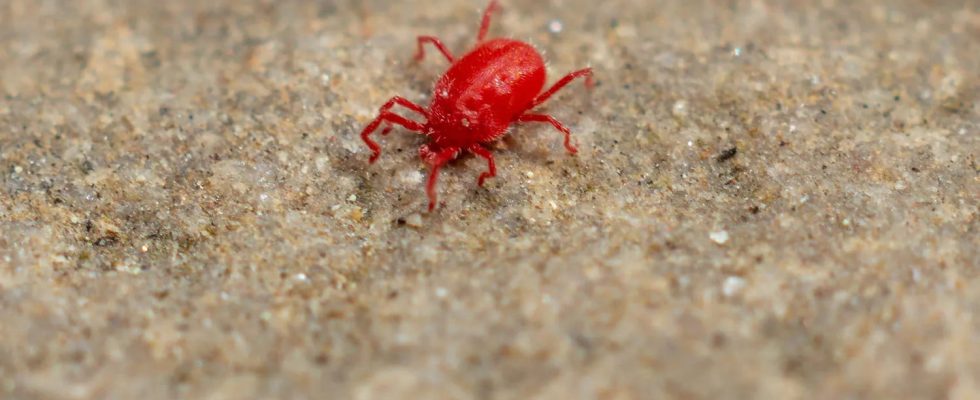Watch out for that tiny little red beast. Its larvae can give you endless itching. Here’s how to prevent them from entering your home.
With summer, nature is in turmoil. But among all the positive changes, a silent threat resurfaces. Microscopic in size but with enormous impact, the chigger is back. These tiny pests are invading the whole country and, soon, could even invite themselves into your home.
Chiggers, mostly invisible to the naked eye, have a complex life cycle. Their larval period, when they are red and particularly active, is in the heart of summer. During this phase, these little creatures are only looking for one thing: to feed on your blood. And they are not very selective. Cats, dogs, rodents, birds or humans can all be their hosts.
Imagine, after a day spent outside, coming home and feeling intensely itchy. This is a sign that these tiny parasites have chosen your skin as their feast. The blistered pimples that appear next are the memory of their passage, causing itching that can last from 2 to 7 days.
Areas at risk? Turfs, shady lawns, orchards and wetlands. In other words, almost everywhere. With females laying up to 400 eggs each, Chiggers proliferate quickly, and they can be plentiful in your garden or local park.
If you thought these pests were just for the outdoors, think again. A pet that ventures outside can easily bring these pests back inside the house. There, in the warmth of your home, they might continue to thrive unless preventative measures are taken.
The first line of defense is prevention. Regularly trimming the lawn seems to reduce their population. In addition, covering the body when going out, by wearing long and covering clothes, limits the direct exposure of the skin to these small threats.
If you are already a victim of their attacks, a warm bath and mild soap can help you get rid of parasitic larvae. Also, in case of intense itching, an antihistamine soothing cream can relieve the symptoms. However, in case of severe allergic reactions, it is imperative to consult a doctor immediately.
As summer is in full swing, these tiny dust mites come to our memory. Although they are harmless in the adult state, feeding only on vegetable liquids and small insects in the ground, their larvae can cause real torment.
Faced with August, it is therefore essential to be vigilant, to protect your skin and your habitat. By being informed and taking the appropriate measures, you will be able to fully enjoy the summer season without the unwanted company of these pests.
